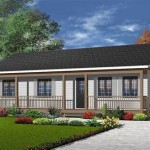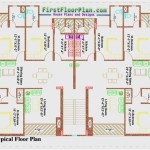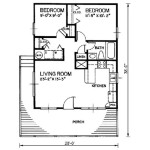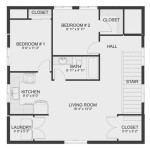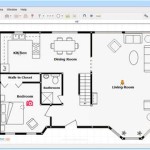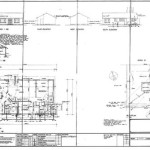1st Floor Master Bedroom Plans: Design Considerations and Advantages
The concept of a master bedroom located on the first floor of a house has grown in popularity in recent years. This design choice offers numerous benefits, particularly for individuals seeking accessibility, convenience, and privacy. Carefully considering the layout and design elements of a 1st floor master bedroom is crucial for maximizing its functionality and aesthetic appeal. This article will explore several key aspects of planning a 1st floor master bedroom, discussing its advantages and some of the factors to consider when developing floor plans.
The decision to place the master suite on the first floor is often driven by lifestyle needs. For aging homeowners, individuals with mobility challenges, or those planning for future accessibility, a 1st floor master bedroom eliminates the need to navigate stairs. This feature becomes increasingly valuable as individuals age and may experience physical limitations. The single-story living arrangement promotes independence and reduces the risk of falls. Furthermore, families with young children may find it advantageous to have the master bedroom on the main level, allowing for easier access to children's bedrooms located on upper floors during nighttime hours.
The strategic placement of a 1st floor master bedroom can also enhance privacy and create a distinct separation between the master suite and other active living areas. By isolating the master bedroom from the noise and activity associated with family rooms, kitchens, and play areas, homeowners can create a peaceful and relaxing retreat. This separation can be especially beneficial for individuals who work from home or require a quiet space for rest and relaxation.
However, successful implementation requires careful planning and attention to detail. Integrating a 1st floor master bedroom into a home’s overall design demands consideration of various factors, including the architectural style, available space, orientation, and desired amenities. A well-designed floor plan will not only meet the functional requirements of the homeowners but also contribute to the overall aesthetic harmony of the house.
Accessibility and Aging in Place
A primary driver for selecting a 1st floor master bedroom is the concept of “aging in place.” This refers to the ability to remain in one’s home safely, comfortably, and independently as one ages. The absence of stairs in the master suite and its connected bathroom significantly reduces the risk of falls and other accidents. This is particularly important for individuals with mobility issues, arthritis, or other age-related health conditions.
Beyond eliminating stairs, accessibility features can be incorporated into the design of the 1st floor master bedroom and bathroom. Wider doorways and hallways allow for wheelchair or walker maneuverability. Lever-style door handles are easier to grasp than traditional knobs. Grab bars in the bathroom provide support and stability. A curbless shower entry eliminates the need to step over a threshold, further reducing the risk of falls. Adjustable-height countertops and sinks can accommodate individuals with varying heights and mobility levels. These features contribute to a more comfortable and accessible living environment for individuals of all ages and abilities.
Furthermore, smart home technology can enhance accessibility and convenience. Voice-activated lighting, temperature control, and security systems can be easily operated by individuals with limited mobility. Automatic door openers and window shades can also be integrated into the design, providing added convenience and independence.
The long-term benefits of incorporating accessibility features into a 1st floor master bedroom far outweigh the initial investment. Not only do these features enhance safety and comfort, but they also increase the resale value of the home. As the population ages, demand for accessible homes is likely to increase, making a 1st floor master bedroom with accessibility features a valuable asset.
Privacy and Sound Insulation
Privacy is another key advantage of a 1st floor master bedroom. By strategically locating the master suite away from high-traffic areas, homeowners can create a more secluded and relaxing retreat. The placement of the master bedroom within the floor plan can significantly impact the level of privacy it offers.
Consider the orientation of the master bedroom relative to other rooms in the house. If possible, avoid placing the master bedroom directly adjacent to the living room, family room, or kitchen. These areas tend to be noisy and active, which can disrupt sleep and relaxation. Instead, consider locating the master bedroom at the rear of the house, away from street noise and foot traffic. Buffering the master suite with a hallway, walk-in closet, or bathroom can also help to minimize noise transmission.
Sound insulation is another important factor to consider. Using soundproofing materials in the walls, floors, and ceilings can significantly reduce noise levels. Installing solid-core doors and double-paned windows can also help to minimize noise transmission. Adding insulation to interior walls can further enhance soundproofing. Soft materials, such as carpets, rugs, and upholstered furniture, can also absorb sound and reduce echo.
Landscaping can also play a role in enhancing privacy and reducing noise. Planting trees and shrubs around the perimeter of the property can create a natural barrier that blocks noise and provides visual screening. A fence or wall can also provide added privacy and security.
Thoughtful planning and attention to detail can transform a 1st floor master bedroom into a private and peaceful sanctuary. By minimizing noise and maximizing privacy, homeowners can create a space that promotes relaxation and well-being.
Integrating Design Elements for Functionality and Aesthetics
Designing a 1st floor master bedroom involves more than just accessibility and privacy. The floor plan should also incorporate design elements that enhance functionality and aesthetics. A well-designed master suite will be both comfortable and visually appealing. The size and layout of the master bedroom should be proportionate to the overall size of the house. A master bedroom that is too large or too small can feel out of place and detract from the overall aesthetic of the home. Consider the dimensions of the furniture that will be placed in the room, ensuring that there is ample space for movement and circulation.
The master bathroom is an integral part of the master suite and should be carefully designed to meet the needs of the homeowners. A spacious bathroom with a double vanity, separate shower and bathtub, and ample storage space is a desirable feature for many homeowners. Consider the layout of the bathroom to maximize functionality and create a relaxing spa-like atmosphere. Natural light is an important element in any bathroom design. Incorporate large windows or skylights to bring in natural light and create a bright and airy space.
A walk-in closet is another desirable feature in a master suite. A well-organized walk-in closet can provide ample storage space for clothing, shoes, and accessories. Consider incorporating shelving, drawers, and hanging rods to maximize storage capacity. A seating area within the walk-in closet can provide a comfortable space for getting dressed and ready. Proper lighting is essential in a walk-in closet. Install recessed lighting or track lighting to illuminate the space and make it easier to find items.
The color palette and materials used in the master bedroom should be chosen to create a cohesive and harmonious look. Neutral colors, such as beige, gray, and white, are popular choices for master bedrooms. These colors create a calming and relaxing atmosphere. Accent colors can be used to add pops of color and personality to the space. Natural materials, such as wood, stone, and linen, can add warmth and texture to the room. Incorporate artwork, accessories, and personal touches to create a space that reflects your individual style and taste.
Lighting plays a crucial role in setting the mood and creating a relaxing atmosphere. Incorporate a variety of lighting sources, including ambient lighting, task lighting, and accent lighting. Dimmable light fixtures allow you to adjust the lighting levels to suit your needs. A bedside lamp is essential for reading in bed. A chandelier or pendant light can add a touch of elegance to the room.
By carefully considering these design elements, homeowners can create a 1st floor master bedroom that is both functional and aesthetically pleasing. A well-designed master suite will be a comfortable and relaxing retreat that enhances the overall quality of life.
In conclusion, planning a 1st floor master bedroom requires considering accessibility, privacy, functionality, and aesthetics. Careful attention to each of these elements can create a desirable and comfortable living space.

Fresh Two Story House Plan With First Floor Master Bedroom 280096jwd Architectural Designs Plans

Main Level Master Floor Plans Dustin Shaw Homes

First Floor Master Bedrooms The House Designers

First Floor Master Bedrooms Plans Not As Easy Just Adding A Room

Two Story Modern House Plan With A Master Bedroom On The First Floor

2 Story Transitional House Plan With Main Floor Master Bedroom 270044af Architectural Designs Plans

Golden Eagle Log And Timber Homes Plans Plan Details Brookside
Trend Check How Popular Are Main Level Master Suites Very Builder

House Plans With First Floor Master

Master Bedroom On Main Floor House Plans Bd Downstairs

